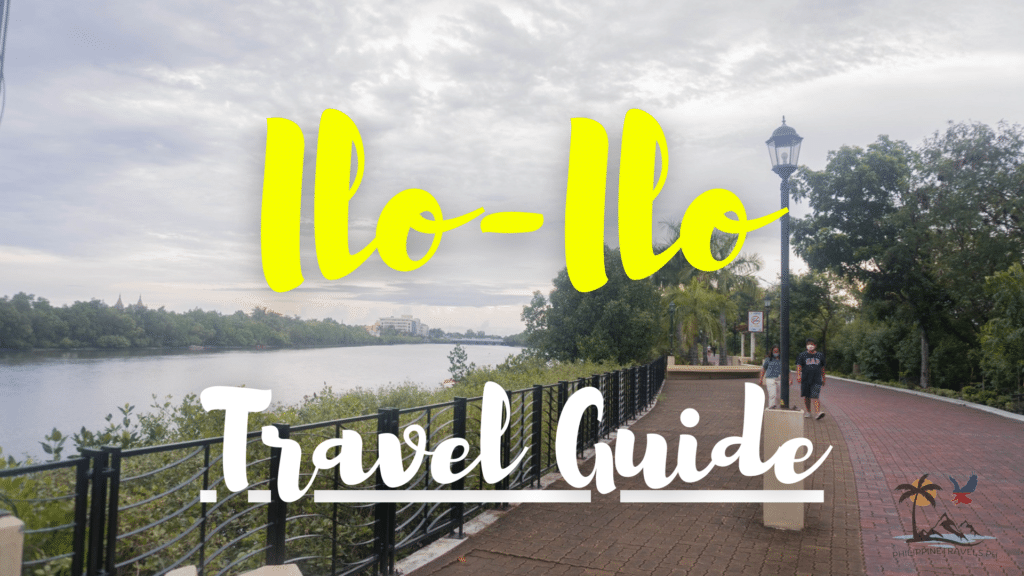Ilo-Ilo stands out for one thing:
Its highly modern, yet somehow still-charming, city.
That’s why most of her attractions are found within the city. The highlight of visiting this province is walking around and admiring how well-made the city is.
That said, if you take time to explore the rest of the province, you’ll find just as much beauty outside the city as there is within.
I spent a whole week exploring Ilo-Ilo, and in this Illo-Ilo travel guide, I’ll share with you everything I’ve learned about this place and how to best experience it.
I’ll go over everything like:
- Essential Ilo-Ilo Travel Facts
- How to Get to Ilo-Ilo (+Travel Requirements)
- An Ilo-Ilo Travel Map showing all the best places to visit
- Some of the Best Places to Stay in Ilo-Ilo
- What to do in Ilo-Ilo (including where to eat, the food here is to DIE for!)
So if you’re ready, let’s dive right in!
Ilo-Ilo Travel Facts
Here are some facts you need to know about the province!
Ilo-Ilo Travel Facts #1: Ilo-Ilo City Is One of the Most CHARMING Cities
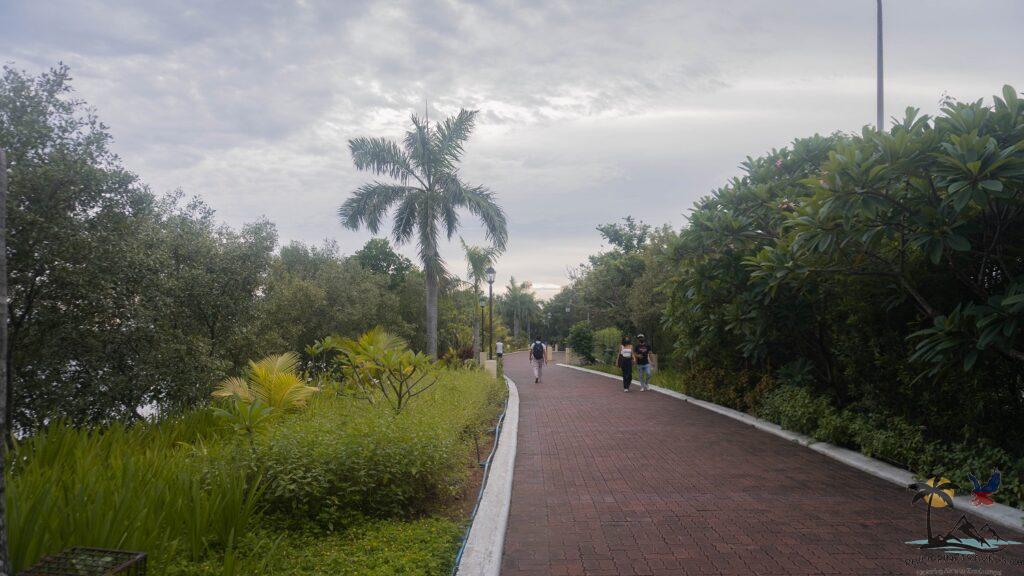
Ilo-Ilo City’s vibe is hard to forget.
If you’re coming from a big city, you’ll LOVE how small and charming Ilo-Ilo City feels.
At the same time, if you’re coming from a rural area, you’ll find that Ilo-Ilo City is modern.
It’s the perfect balance between a small town and a major urban center.
That’s why I say this city is one of the BESTs in the country.
From a traveler’s eyes, Ilo-Ilo City has plenty to explore – from some of the oldest churches to modern districts with skyrise buildings.
Plus, it makes for an awesome base to travel to other parts of the province.
Finally, Ilo-Ilo City has a LOT of delicious foods to eat, which brings us to:
Ilo-Ilo Travel Facts #2: Ilo-Ilo’s Food is to DIE For
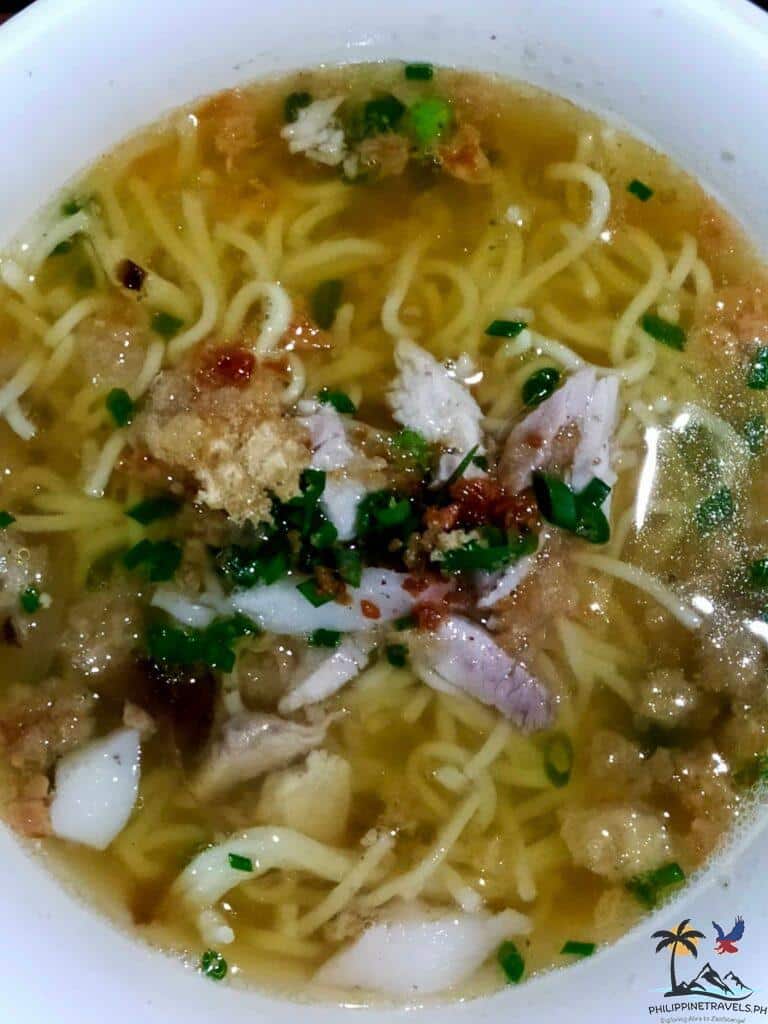
You’ve probably had La Paz Batchoy by now – even if it was just a Lucky Me! cup noodle.
But do you know where this dish came from?
That’s right, Ilo-Ilo is the birthplace of this national favorite.
And not only that, but Ilo-Ilo is also home to many mouth-watering dishes, making it one of the food capitals of the country.
The great thing is that Ilo-Ilo food isn’t wild.
Aside from dumping dumplings into soup (pancit molo), you won’t come across crazy dishes that require an acquired taste to enjoy.
What you will find instead are the same types of dishes enjoyed all over the country – but with a little extra “kick” that somehow makes them better.
I’m talking liempo (Ramboy’s), lechon manok (Tatoy’s), siopao (Roberto’s), and even coffee (Madge Cafe).
All these make Ilo-Ilo a foodie paradise.
Ilo-Ilo Travel Facts #3: The Locals Don’t Speak Tagalog or Cebuano!
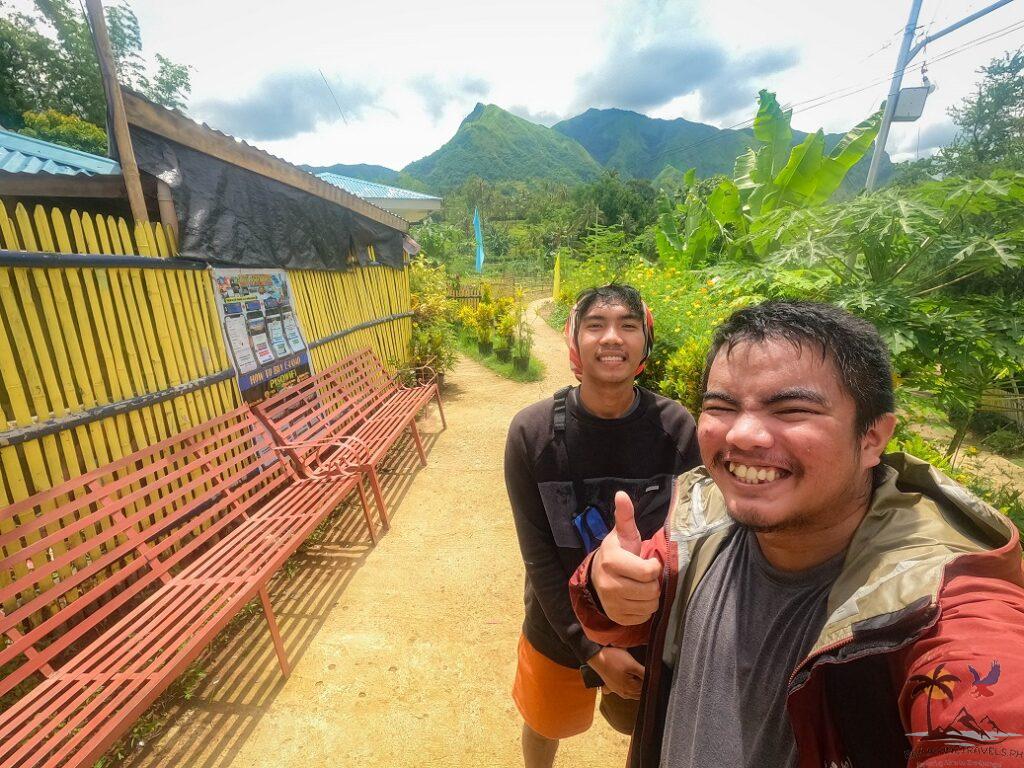
Nope!
They use their native language Ilonggo (also called Hiligaynon), just like most Western Visayans do.
Sure, you can get away with speaking Tagalog here (just like in most of the country), and most Ilonggos understand some English.
But as someone who only knows English and Cebuano, I had quite an adventure trying to talk to the locals!
During my hike to Mt. Napulak, my guide and I were using FOUR languages. He was using Tagalog and Ilonggo, while I was using Cebuano and English.
It’s pretty crazy, but we were somehow able to communicate just fine.
Ilo-Ilo Travel Facts #4: Learning Ilo-Ilo’s History is Worth The Time
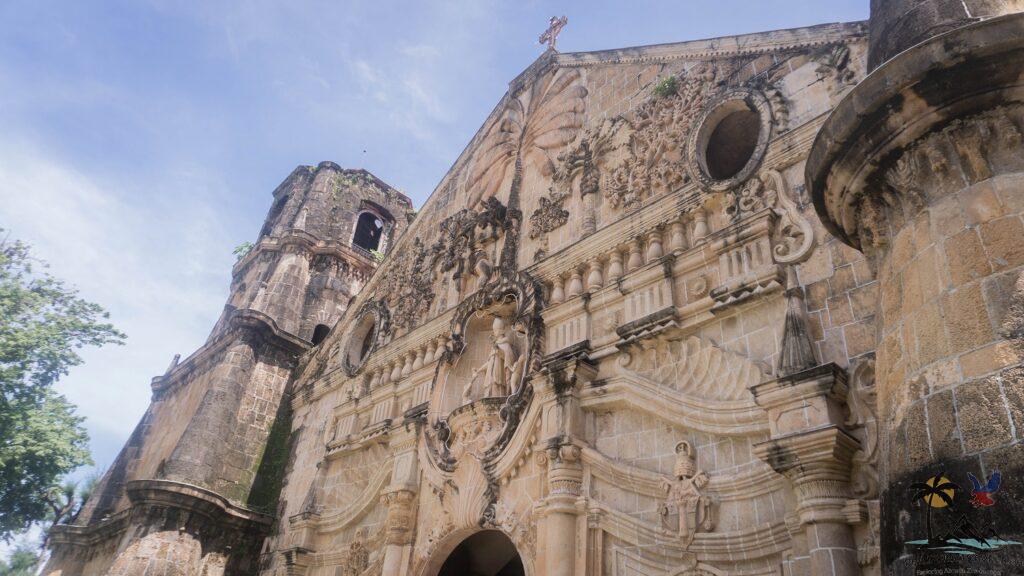
Reading history might not be your cup of tea, but hear me out:
For Ilo-Ilo, it is WELL worth your time.
Even if you aren’t a history buff, knowing how Ilo-Ilo, the former “Queen City of the South”, got to where it is today and let you appreciate the city so much more.
You’ll understand the districts of the city, why there are towers on the river mouths, why there are so many mansions in the city, why Ilo-Ilo preserved their old churches better than everyone else, and so much more.
I’ll give you a teaser:
A lot of Ilo-Ilo’s old churches are still standing because, unlike most of the Philippines, Ilo-Ilo sided WITH the Spaniards during the Philippine revolution.
Shocker right???
Well, there’s a lot more where that came from.
And knowing these details will help you appreciate the city and its landmarks so much more.
Ilo-Ilo Travel Facts #5: There’s Plenty to See Outside the City (But Plan Your Trip Wisely!)
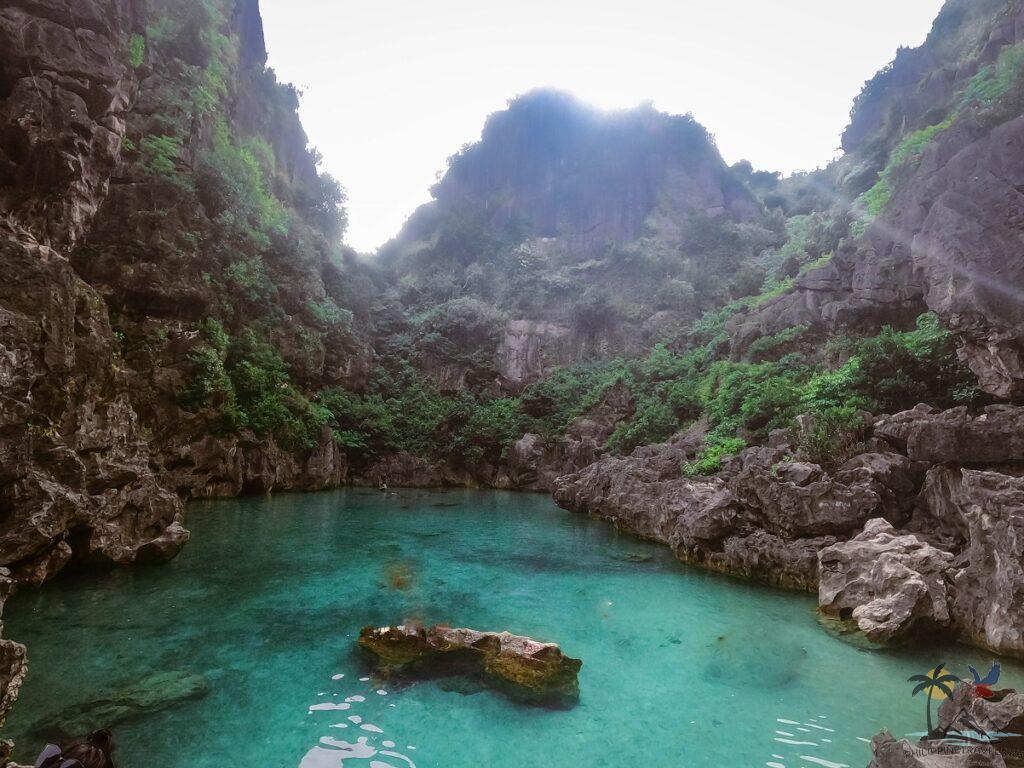
You can spend your entire stay in Ilo-Ilo city and that’d be great. It’s interesting enough that you don’t necessarily have to leave the city.
But if you have a day to spare, there’s a lot to experience outside!
One of the challenges of traveling Ilo-Ilo is that it’s a BIG province.
Visiting any of the attractions is going to be a whole-day activity. You can’t see everything unless you’re staying for months!
Their most popular attraction (Islas de Gigantes) is a grueling 4 HOURS away from the city. Other tourist sites are mostly 1-2 hours out of the city.
That’s why it’s important to choose wisely!
I wrote about some of the out-of-town attractions in my Ilo-Ilo tourist spots post (skip to the part where I talk about spots outside the city!), which can help you plan.
Or, you can be spontaneous and go somewhere unknown!
How to Get to Ilo-Ilo

There are MANY ways to get into Ilo-Ilo, but the three main ways are through the airport, the seaport, and the bus terminal.
There are direct flights from Manila, Cebu, Davao, and General Santos – most of these are daily.
It’s important to note that the Ilo-Ilo airport is about 30 minutes away from the city.
But don’t worry too much about it.
When you land, you’ll find you have several options. There are taxis and van services ready to take you to the city, just make sure you agree on a price before you hop in!
Another major entry point is the Ilo-Ilo seaport.
Taking a ferry from Bacolod is one of the most common ways to get into Ilo-Ilo. There are plenty of boat operators running this route. A fast craft takes only 1 hour, and costs roughly php600. You can check schedules and book online here.
Their seaport also has boats coming from Guimaras, Cagayan de Oro, Palawan, Cebu, and even Batangas.
Finally, Ilo-Ilo is just one province in the large Panay island, so there are lots of vans and buses coming from other provinces.
You could also take a flight to Caticlan, Kalibo, or Roxas City airport, then take a bus into Ilo-Ilo.
Ilo-Ilo Travel Requirements
As of 2024, Ilo-Ilo has no more travel requirements! You may now enter the province regardless of vaccination status.
Ilo-Ilo City Travel Map
A fun, Ilo-Ilo travel map is coming soon!
For Ilo-Ilo, you’ll need two maps:
One for the city, and one for the entire province.
First up, we’ll take a look at some of the parts of the city. Then, we’ll take a step back and have an overview of what the entire province is like.
Ilo-Ilo City is divided into seven districts.
Most of them are similar to one another, but here are a few ways a traveler can group them up:
Ilo-Ilo City Areas: Ilo-Ilo City Proper (Downtown)
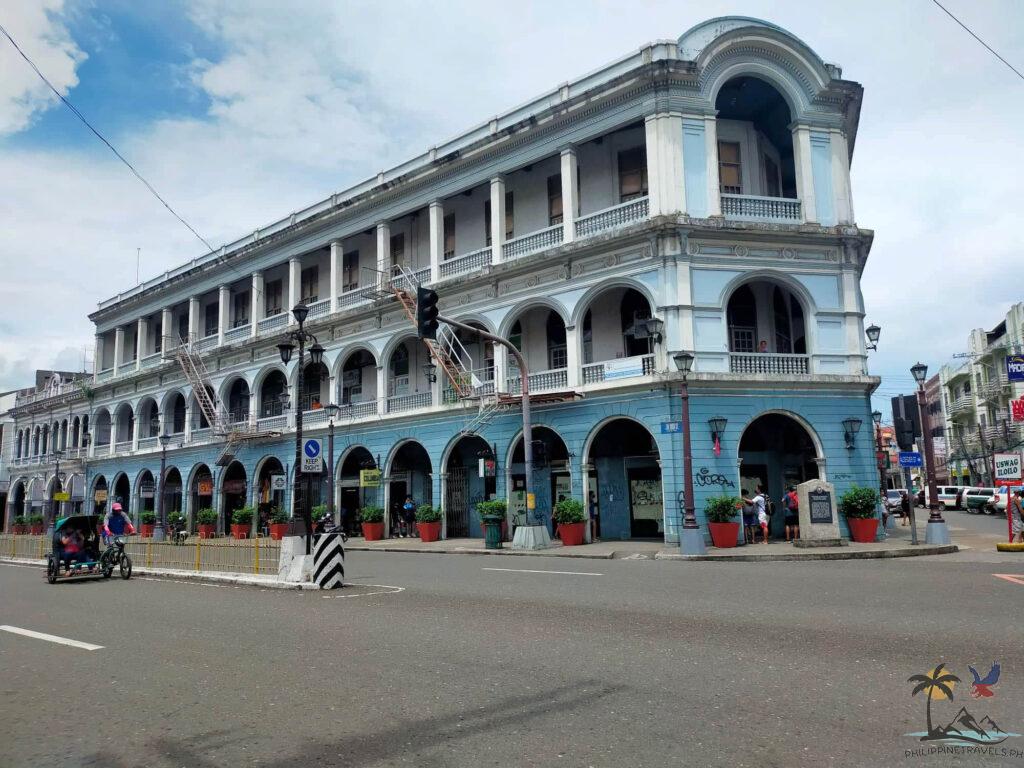
I’m not the biggest fan of downtown areas.
They’re crowded, the roads are way too small and confusing, and there’s a very real sense that if I stash out my camera, I’ll get targeted by pickpockets.
That said, if you want to experience what life is really like for a lot of Illonggos, this is the place to do it.
If you don’t mind walking crowded streets and want to admire the old, run-down buildings of the old Ilo-Ilo, this is where you should be!
If you want to walk the street, the best place to do that would be JM Basa street.
This is where you’ll find the famous Calle Real landmark pictured above.
And you can also stop by the famous Roberto’s Siopao to get some snacks:
Finally, you can end your stroll at the Plaza Libertad, where there are several benches you can rest on.
Aside from that, you can also find the Museo Ilo-Ilo in this area.
Ilo-Ilo City Areas: Mandurriao (Megaworld & Atria)
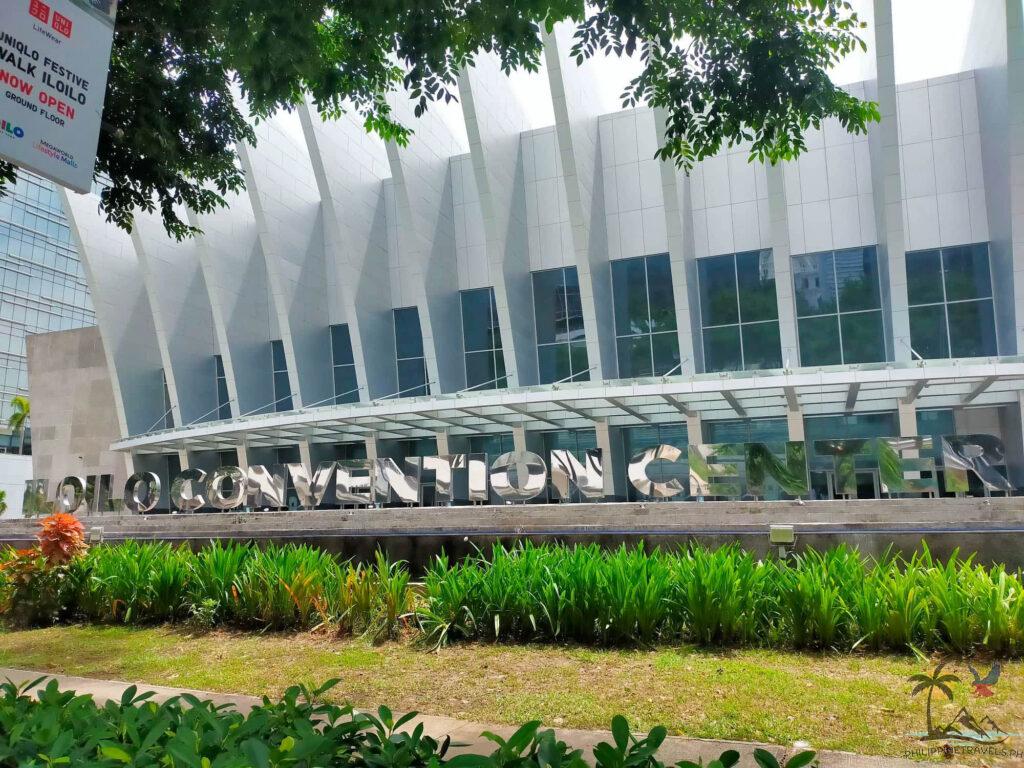
If you teleported from downtown Ilo-Ilo to Mandurriao, you probably won’t believe you’re in the same city.
Instead of small crowded streets and old, haphazard buildings, you’ll find wide streets, beautiful sidewalks, and even big bike lanes!
The buildings are all modern too. Well… at least in the Megaworld and Atria parts of Mandurriao.
This is the area where all the nightlife is. There are a bunch of establishments here that close very late (or don’t close at all). And walking around, you’ll come across several live bands playing music for customers.
Best of all?
Everything is SUPER clean.
Ilo-Ilo City even made waves in the media recently for being one of the cleanest, nicest cities. Fact check: they were only looking at Mandurriao.
There’s so much to see, do, and eat in this modern side of the city. You can walk around the ultra-modern Megaworld Boulevard, shop and eat at Atria open-air mall, appreciate the well-planned & well-built highway at Plazuela, or take a leisurely stroll at the River Esplanade.
If you’re spending time in the city, most of it is probably going to be right here in Mandurriao.
Ilo-Ilo City Areas: Molo and Villa Arrevalo
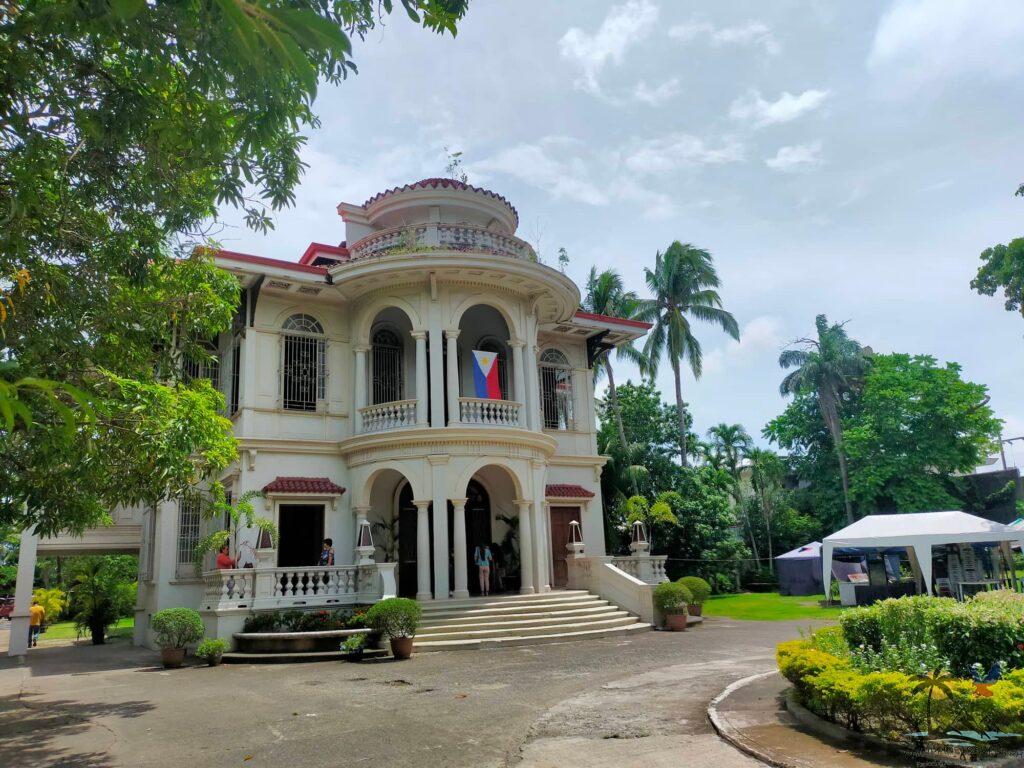
Just across the river from Atria, you’ll find another older district:
Molo.
And south of that?
You’ll find a super similar district called Villa Arrevalo.
Both of these have a pretty old feel to them, but they’re not as busy as the town proper.
Both of these districts have popular attractions too.
In Molo, there’s the Molo Mansion and Molo church. While in Villa Arrevalo, there’s the Camina Balay na Bato old house, and the popular Breakthrough restaurant.
Ilo-Ilo City Areas: Jaro, La Paz, and Lapuz
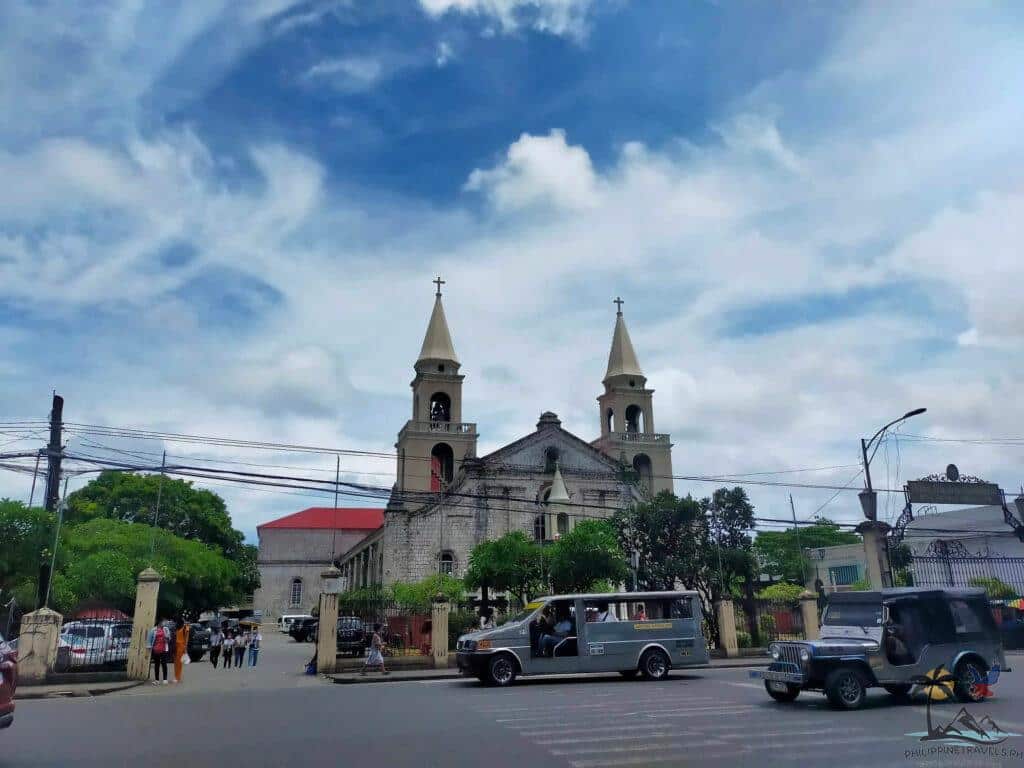
On the north-eastern end of the city, you’ll find three similar districts:
Jaro, which is where I stayed, has the feel of an old city charging head-first into the 21st century. You’ll find plenty of modern shops and buildings, but also really old churches (Jaro Cathedral) and mansions (Lopez Mansion, Casa Mariquit, Lizares Mansion, etc) here!
La Paz has the same feel, but maybe a little bit older and more similar to the city proper. The La Paz market is famous as the birthplace of La Paz Batchoy. Sure, you can enjoy this dish anywhere in Ilo-Ilo – but some travelers like to go back to the roots and enjoy it in the market itself.
Finally, Lapuz is home to most of the piers in Ilo-Ilo. It’s a busy district, with lots of trucks carrying shipping containers to and from the docks. It’s also where you’ll find roros and fastcrafts to other nearby provinces!
Ilo-Ilo Province Travel Map
If you take a look at Ilo-Ilo from above, you’ll find that the province is mostly flat. This is especially noticeable as your plane is descending for landing.
Because of this, there aren’t too many natural wonders all over the place. What you will find though, are charming (I keep using this word) little towns scattered all across the flat lands.
Now, I’ll admit…
I only experienced a fraction of what Ilo-Ilo has to offer.
But with what little I know of the province, here’s how I’d divide up the province as a traveler:
- The city (we already looked at this)
- South towns
- North islands
- Inland highlands
Let’s have a look!
Ilo-Ilo Province Map: South Ilo-Ilo Towns (Guimbal, Miagao, San Joaquin)

If Ilo-Ilo City isn’t charming enough, you can visit some of the towns south of the city.
There are a bunch of these as you drive south, but some of the most notable ones are Guimbal, Miagao, and San Joaquin.
Guimbal is a joy to drive through. The road is lined with bright white fences painted with golden suns.
They also have a very cozy river park where you can just spend your time chilling and watching the locals.
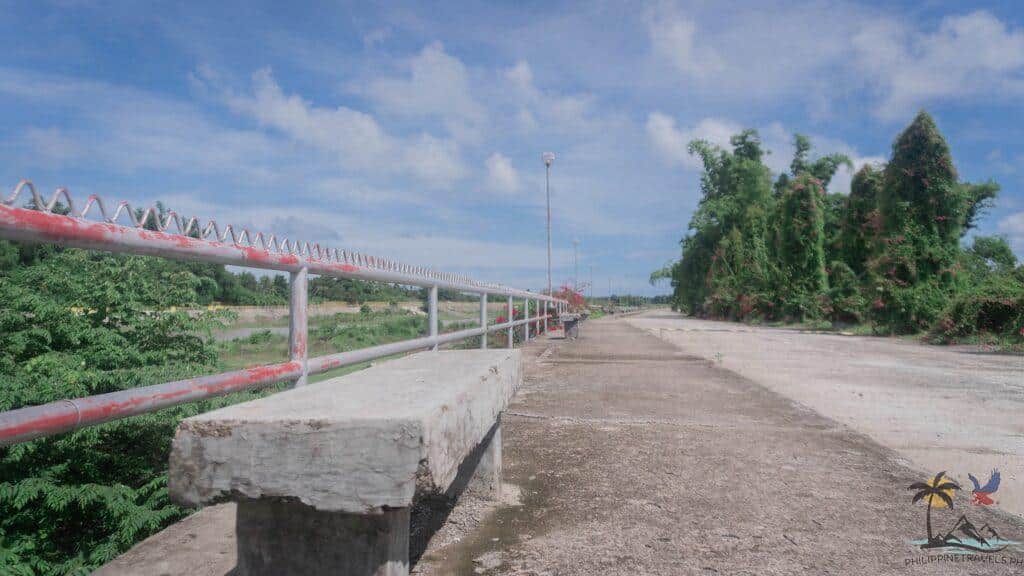
Miagao is a university town.
You’ll find people from all over the region (and even across the country) studying here.
Also, just about all of the Ilo-Ilo towns have a very, VERY old church that’s still in great shape. But Miagao has one better than everyone else.
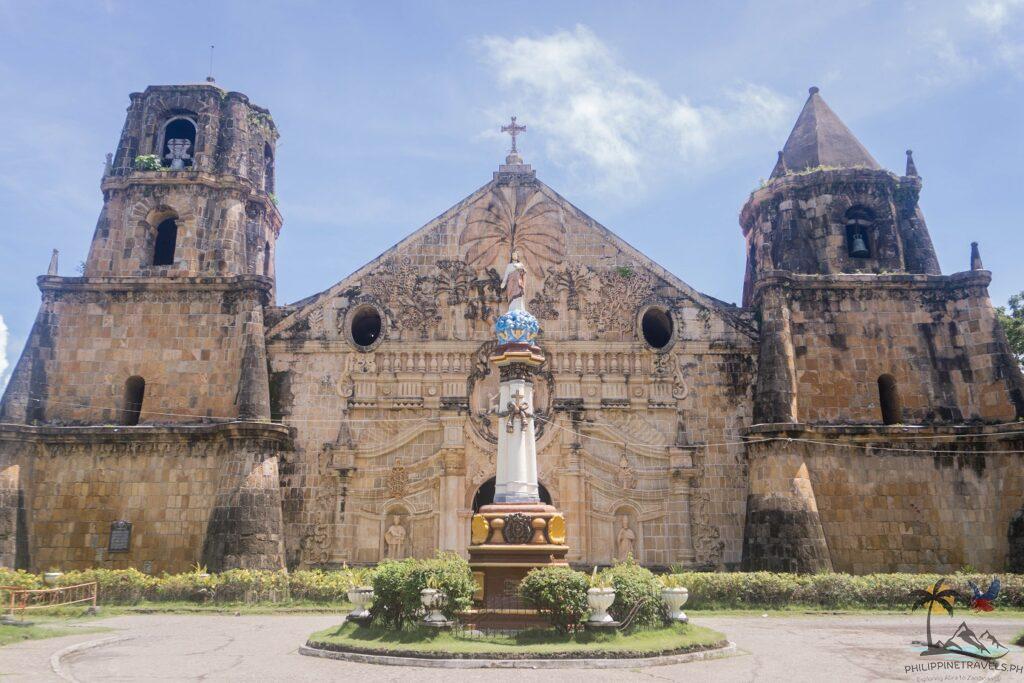
It’s so beautiful and well-preserved, it’s recognized by UNESCO as a World Heritage site!
Finally, there’s San Joaquin, the southernmost town of Ilo-Ilo.
Plenty of tourists come here to visit Garin Farm. But if you take the time to explore the town itself, there are plenty of things to keep you occupied.
San Joaquin has a very old and striking cemetery that you can visit.
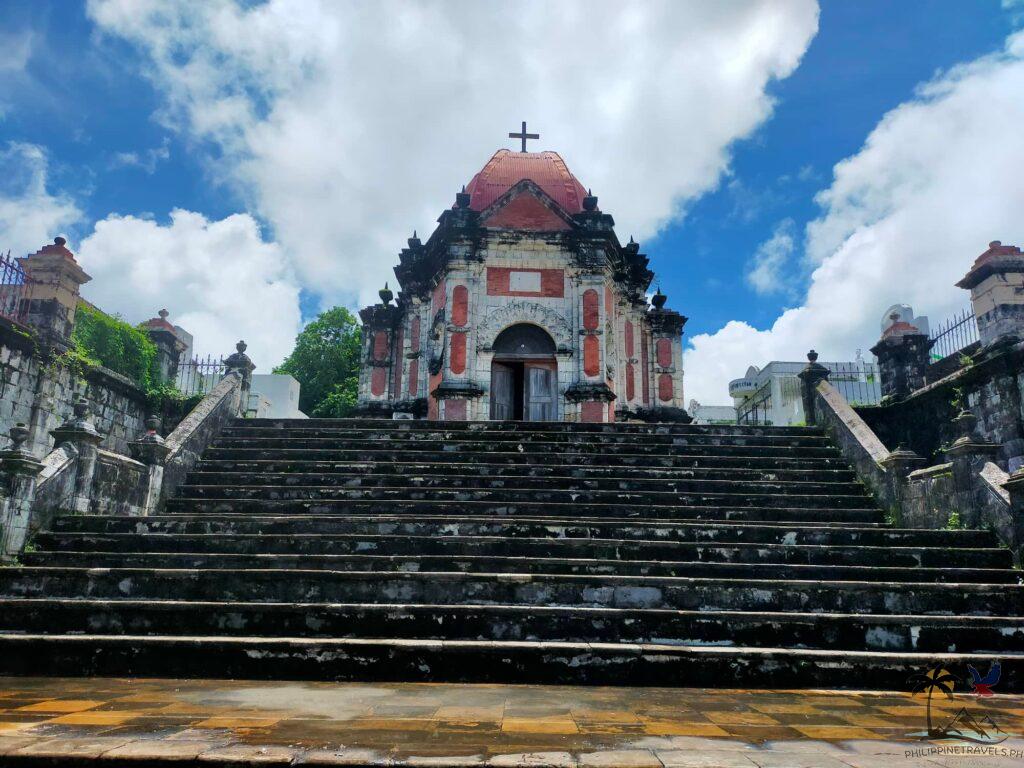
I’ve also heard they have a marine sanctuary here, although sadly, I didn’t have the time to check them out and swim.
Ilo-Ilo Province Map: North Islands (Islas De Gigantes, Sicogon, Concepion, Ajuy)
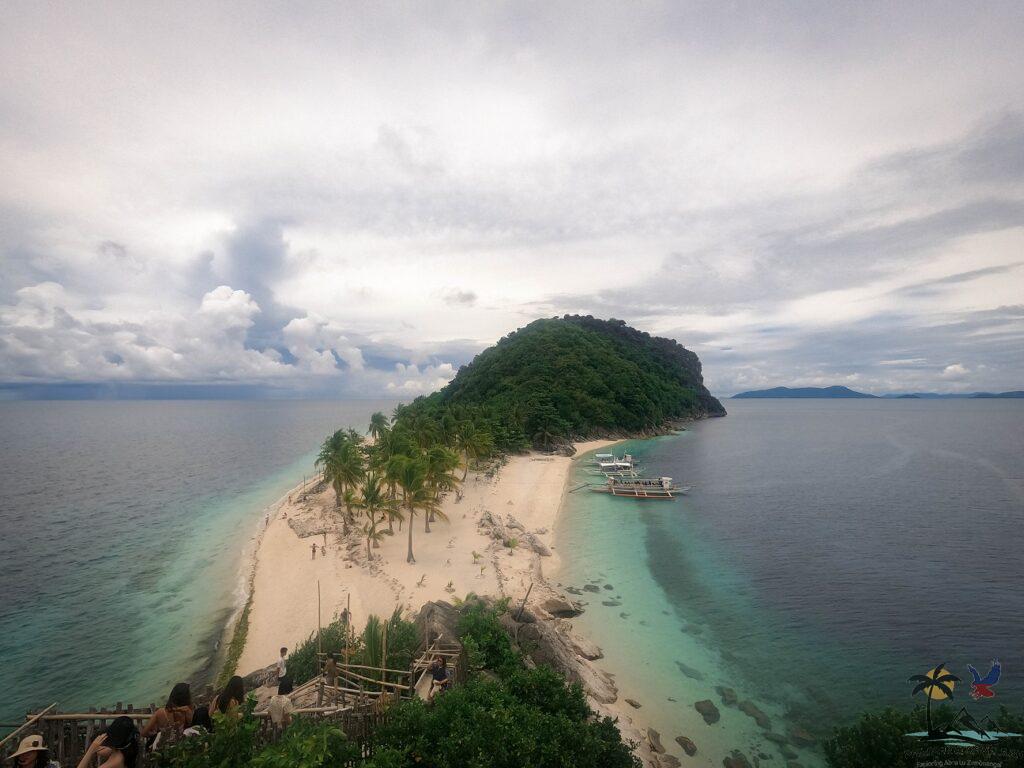
For beach-goers, northern Ilo-Ilo is the place to go!
Yes, the south has beaches too. But these mostly have gray sand or lots of pebbles, so they’re not super ideal.
Up north though? It’s a beach-lovers zone.
Islas De Gigantes is by far the most popular tourist spot in Ilo-Ilo, and for good reason.
The white sand of these islands makes them the tropical paradise so many people are looking for in the Philippines.
To add to that, there are also plenty of interesting limestone formations here. It’s almost like a mini Coron if you will.
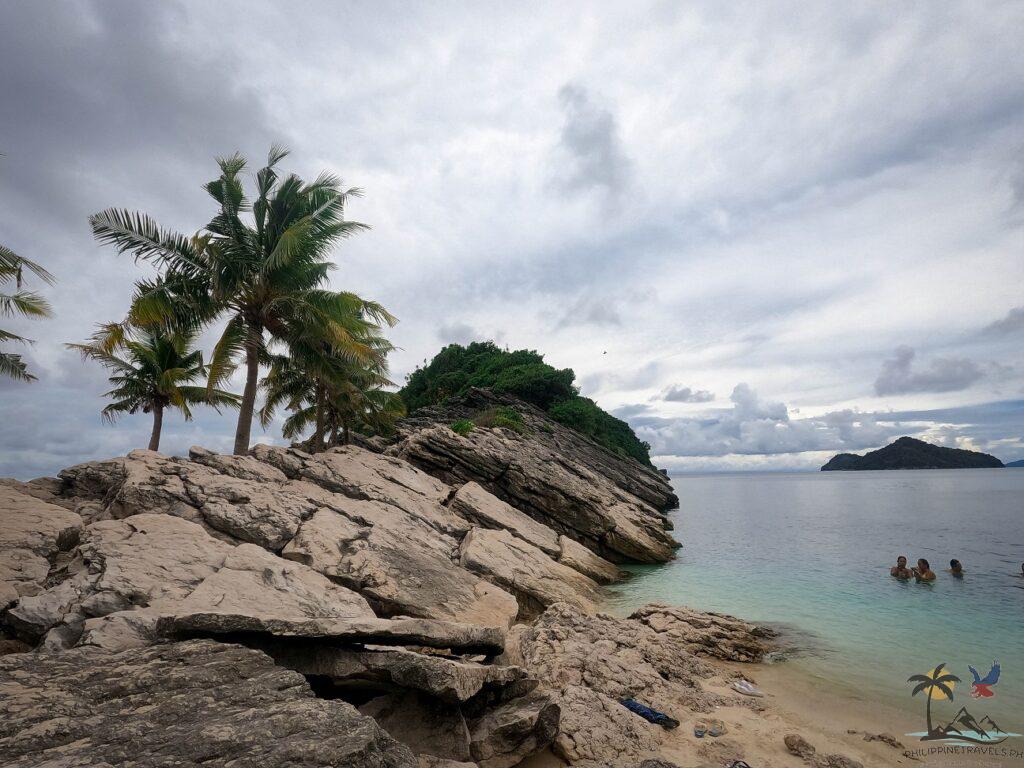
There are tours of these islands every day, so it’s very easy to join one and explore.
Sicogon Island is another popular destination.
There is a luxury resort on the island, but you can also camp out on one of the beaches.
I wanted to go and visit to see Mt. Opao, a tall hill on the island that provides stunning views during sunrise.
Unfortunately, joiner tours of this island are only available during weekends, private tours were too expensive for me (php4,500/head for 2pax), and I ran out of time to use the public transportation boats.
Then finally there are the Concepion and Ajuy islands, which I’m told are also popular destinations for Ilonggos!
Ilo-Ilo Province Map: Inland Highlands (Bucari, Igbaras, Dingle)
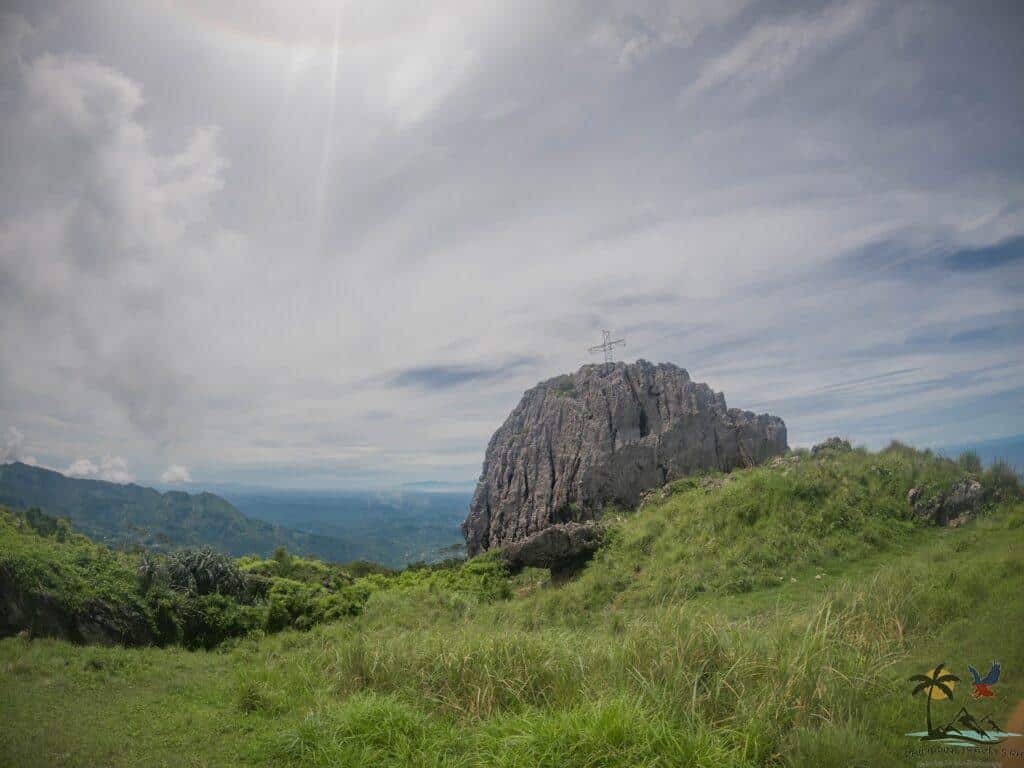
For a province as flat as Ilo-Ilo, it’s no surprise that the people LOVE their highlands.
You’ll usually have to travel deep inland before you find any kind of elevation.
But when you get there?
Boy is it worth it!
The Ilo-Ilo highlands span almost the entire western side of the province. There are SO many towns and hidden natural wonders in this area, so here are just a few of them:
Bucari Pine Forest is known as the little Baguio of Iloilo.
It’s a manmade pine forest high up the mountains of Leon.
Pine trees in a tropical country are already quite unusual, but there’s even more to do around here.
If you take a short trek to the Mansiga view deck during sunrise, you’ll witness one of the most surreal sunrises ever. You might even spot the speck that is Ilo-Ilo City on the horizon.
Other highland areas like Igbaras are favorites for adventure junkies. Igbaras is full of natural wonders like mountains, waterfalls, caves, and even a rock wall for rock climbing.
Mt. Napulak and Nadsadjan Falls are two landmarks well worth the visit in this part of the province.
Then there’s Dingle up north, which is home to the Bulabog Putian National Park. Here you’ll find a thick protected forest landscape and numerous caves for spelunking!
Where to Stay in Ilo-Ilo (+Where I Stayed)
As a major city, there’s no shortage of places to stay in Ilo-Ilo.
They have everything from hostels to mid-range hotels, and even luxury resorts.
I can’t cover all your options of course, but here are a few popular places you can stay while in Ilo-Ilo!
Budget Places to Stay in Ilo-Ilo
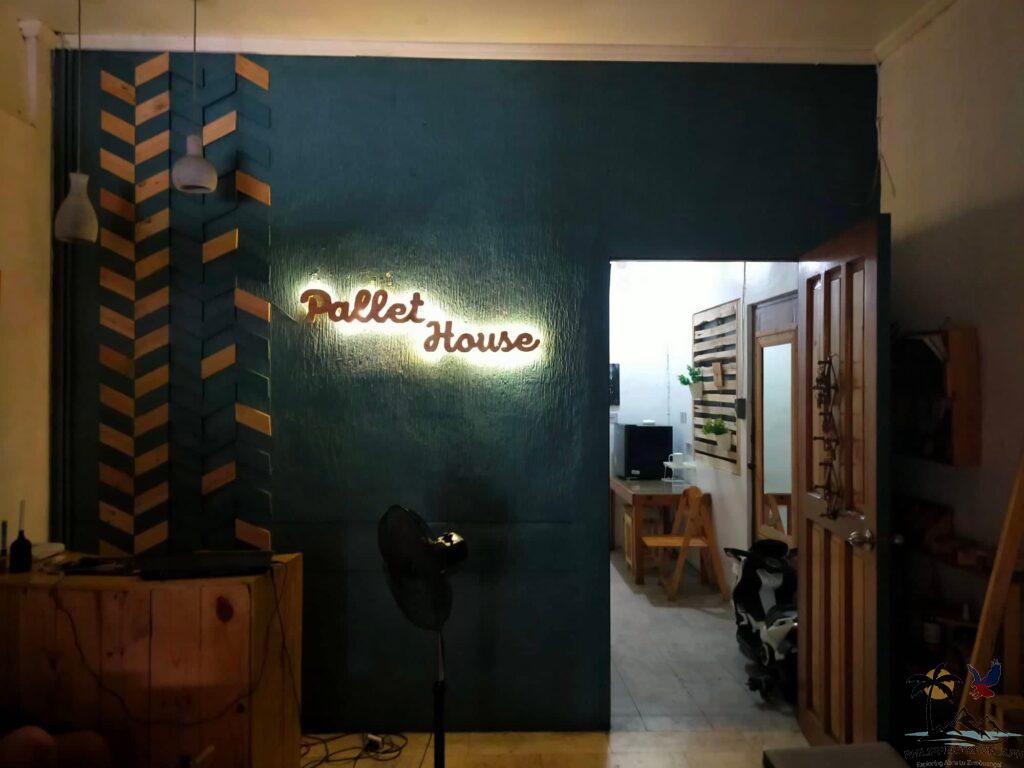
When I was in Ilo-Ilo, I stayed in The Pallet House – a small lodging house in Jaro for just php550/night ($11).
They advertise themselves as a rustic lodging place, with some nice woodwork pieces you can post on your Instagram.
It was… well… It was okay.
Nothing special, but nothing you won’t expect from cheap lodging in a city.
My only complaint is that there weren’t any windows in my room – so it was stuffy, and I had no idea what time it was when I woke up (or if it was even morning).
I heard that there are plenty of places like this in the City Proper, so you can go searching there.
Or, if you prefer hotel chains, a very cheap and popular one is Red Doorz.
Red Doorz is an international budget hotel chain, and they have several branches in Ilo-Ilo. I was considering staying in the branch in Villa Arrevalo for only php600/night ($12), but I figured it’d be quite far away from Mandurriao (where I planned to spend most of my time).
Other budget places:
- Ong Bun Pension House – 1km from the city center which makes it convenient to everything (malls, restaurants, small shops, pharmacies). Very budget friendly place, too.
- La Fiesta Hotel – 990 meters from Molo Mansion and a kilometer away from SM City Iloilo. You’ll get spacious rooms with clean linen and blackout curtains. Staff is very friendly, too!
- Saint Dominique – Located in Mandurriao, you’ll be close to places like Megaworld, Atria and SM City Iloilo. The place is tidy with facilities such as gym and pool.
Mid-Range Places to Stay in Ilo-Ilo
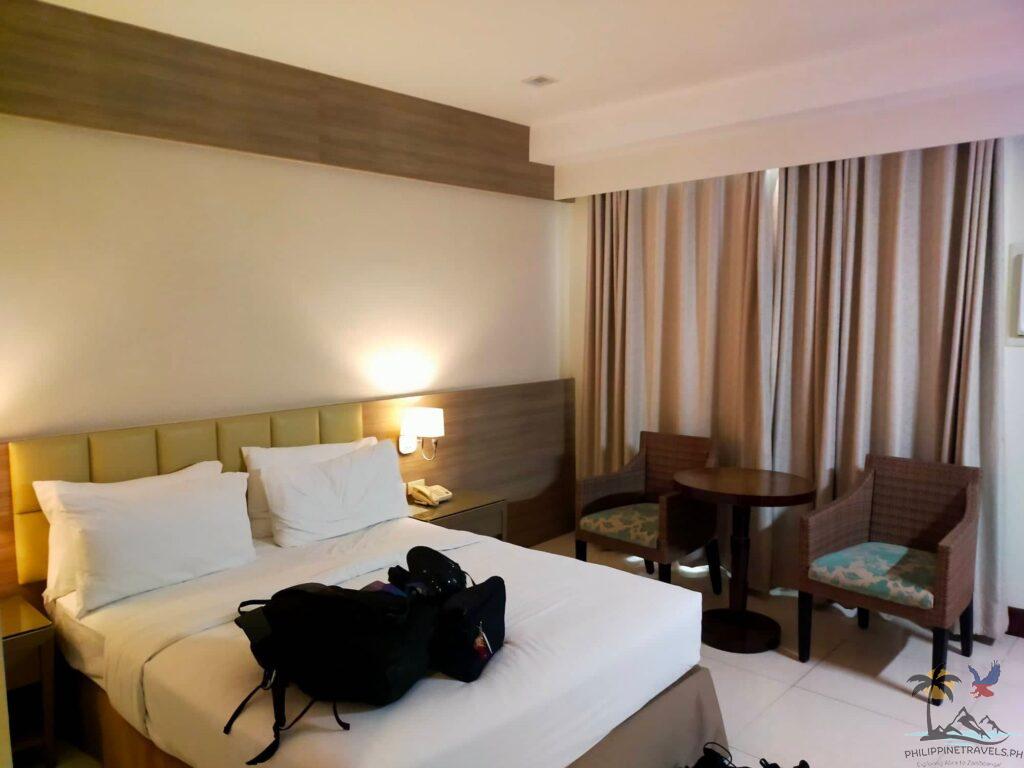
If you’re planning to spend a little bit more on your place to stay, I highly recommend staying in the Mandurriao area.
There are a LOT of great places to stay around Atria that won’t break the bank.
After six nights in my small, stuffy room in Pallet House, I decided to spend my last night in Ilo-Ilo in a more comfortable hotel.
I chose SmallVille21, a popular hotel right in the heart of Mandurriao, for php1,800/night ($36).
The best thing about SmallVille21 is its location. The moment you walk out of their doors, you’ll find the Atria right across the street. And just a few steps away is the Ilo-Ilo BoardWalk, where a lot of popular restaurants are found.
It isn’t too far away from MegaWorld boulevard either.
Another place I tried staying way back in 2018 is at a BnB in Avida Towers by Atria.
Again same area. Of course, there are mid-range places all over the city, but I really can’t recommend staying around the Mandurriao area enough.
There are also plenty of mid-price hotels in the City Proper.
One popular choice you can check out is GoHotels.
Other mid-range hotels:
- Saint Dominique – Located in Mandurriao, you’ll be close to places like Megaworld, Atria and SM City Iloilo. The place is tidy with facilities such as gym and pool.
- Majestic View – Easy access to SM City Iloilo and Iloilo Convention Center. Enjoy the neat rooms with soft colors, the balcony view and a private pool.
High-End Places to Stay in Ilo-Ilo
When it comes to high-end places to stay, you’ll find that most of these are along the MegaWorld Boulevard, and why not?
This is by far the most modern street in Ilo-Ilo. It’s also where most business conferences and events are held too.
That’s why major chains like Marriot, Radisson, and Richmonde all have hotels along this street.
There are a few higher-end hotels around the city proper as well, such as GT hotel. But if you’re thinking luxury, MegaWorld Boulevard is the place to find it.
High-end hotels:
- Injap Tower Hotel – Comfortable stay in a convenient location (right across SM City). The room and breakfast are reasonable for its price with toiletries, microwave oven, personal refrigerator. Gym and swimming pool are also available if you want indoor activities.
- Seda Atria – A stylish and contemporary hotel located inside the city center (780 meters from SM City Iloilo). Enjoy their fitness center as well as their dining options.
- Richmonde Hotel Iloilo – Convenient location (Megaworld Boulevard, SM City, Atria). Spacious rooms with daily housekeeping. You can also enjoy their gym and indoor pool.
Interesting Places to Stay Outside Ilo-Ilo City
If you’re visiting spots outside the city, you don’t have to make it a day trip and hurry back to the city when nighttime arrives.
Some places, such as the Islas de Gigantes, have several accommodations in some of the islands!
Most of these are simple guest houses, but if you’re looking for a nicer resort, you can stay on the mainland. Solina Resort is a popular 4-star hotel that’s just a few minutes away from Bancal port.
Sicogon Island also has a luxury resort of its own. But if you’re feeling adventurous, you can also pitch a tent by the beach here.
For the highlands, you can rent a cottage in Bucari Pine Forest itself. It’s a very simple cottage with bunk beds and mosquito nets, but it’s the perfect place to rest if you want to catch the sunrise on the Mansiga Viewdeck.
There’s also a nearby resort called Bucari Pineridge. Their rooms go for php3,500 (good for 6), and they have a simple cottage going for php1,500 (good for 2).
Finally, in the South, you can also opt to stay in Garin Farm itself.
What To Do In Ilo-Ilo
Now to the fun stuff!
I’ve already hinted a lot about what there is to do in this beautiful province.
But now, let me get into some details!
Here are the best things to do while in Ilo-Ilo!
Things To Do In Ilo-Ilo #1: Stroll The River Esplanade
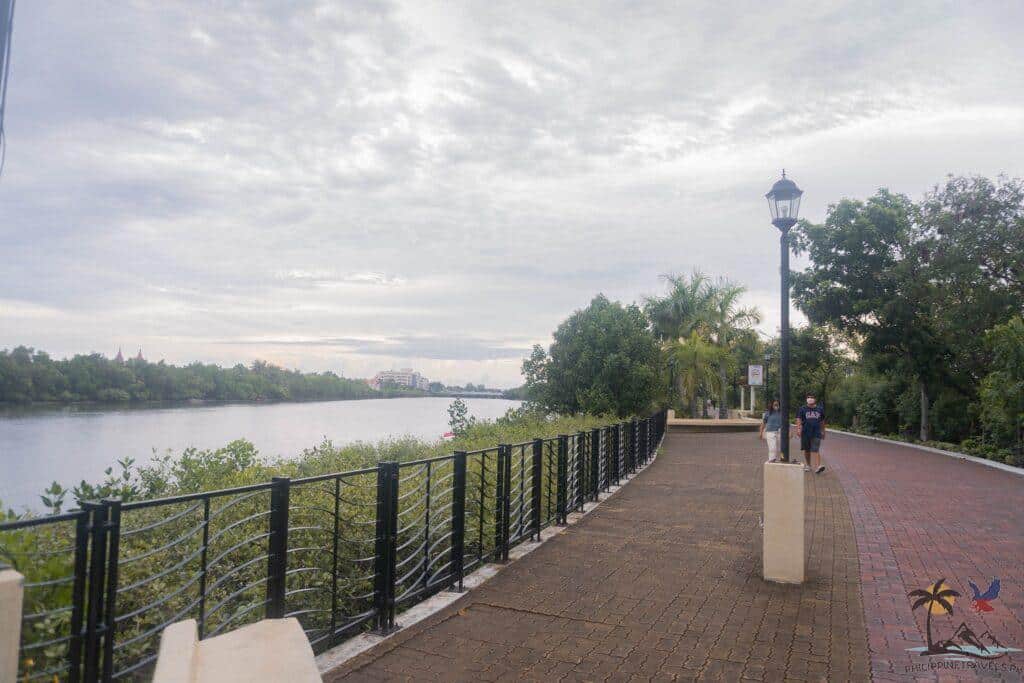
Whether you’re staying for one day or one month, one thing you MUST do while you’re here is to stroll the Ilo-Ilo river esplanade.
This cozy, picturesque walkway is one of the defining features of Ilo-Ilo.
That’s why taking a casual walk, or maybe a jog, here is something everyone should do.
It’s also in a convenient location.
If you start at the “I AM ILOILO” signage, it’s just a short walk before you find yourself on the Ilo-Ilo River Boardwalk, where you can have dinner.
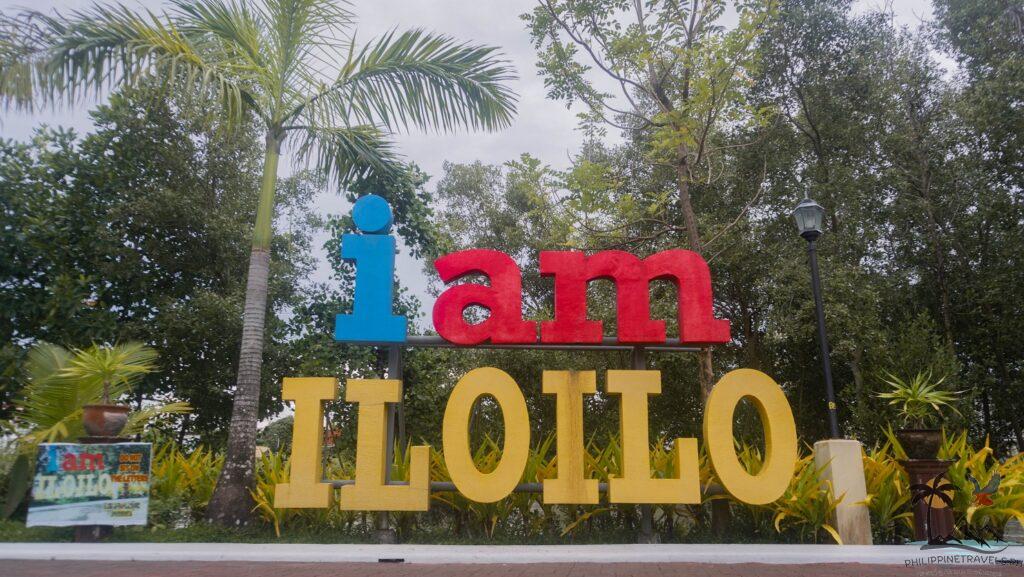
There are also other activities that you can enjoy in the river, such as kayaking or pedal boating.
Things To Do In Ilo-Ilo #2: Go On a Food Trip! (Where to Eat in Ilo-Ilo)
I’ve said this before and I’ll keep saying it:
Ilo-Ilo food is to DIE for!
But if you’re wondering what you should try and where you can have it, here’s a quick rundown of the more popular places to eat in Ilo-Ilo!
- La Paz Batchoy (Ted’s Oldtimer Batchoy, Netong’s, Deco’s)
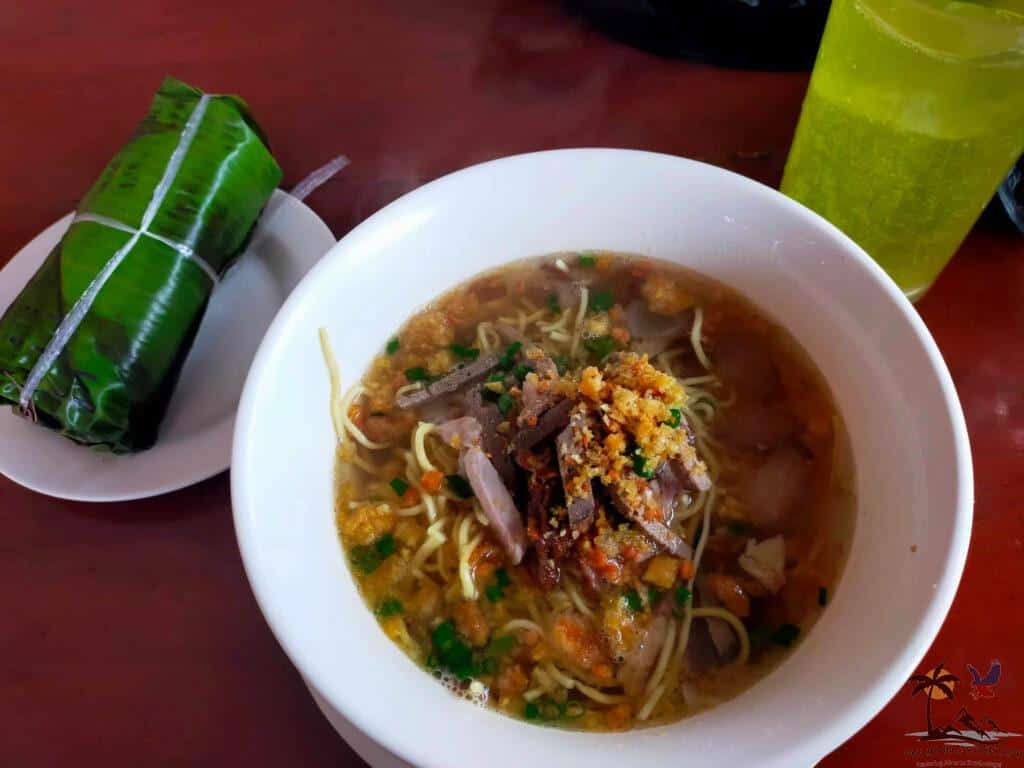
Ilo-Ilo’s signature dish!
La Paz Batchoy is a noodle soup made from chicken stock with pieces of chicken, beef, pork liver, chicharron, and a bunch of greens.
It’s a hearty soup, and you can enjoy it almost anywhere in Ilo-Ilo. The most popular stores serving this (Ted’s Oldtimer Batchoy, Netong’s, and Deco’s) have branches all over the city.
But then again, if you want to go back to the roots, you can also have some in La Paz market itself!
- Pancit Molo (Kap Ipsing’s, Punot)
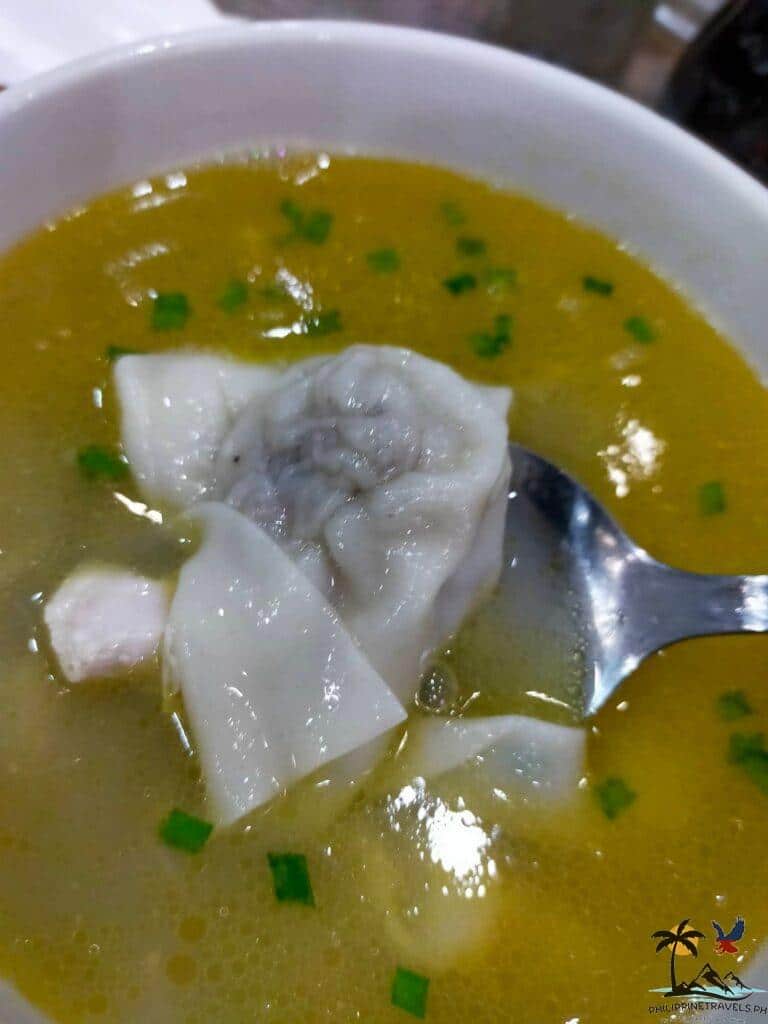
Pancit Molo isn’t quite as popular as La Paz Batchoy, but it’s another “national” dish that was born in Ilo-Ilo.
It’s a Filipinized version of wonton soup. In it, there are dumplings, shredded chicken, shrimp, and just a little bit of greens.
This dish is available in a LOT of places around the city. The two most popular places to have it are in Kap Ising’s in Atria (fast food), or Punot in the Boardwalk (fancier restaurant).
- Native Coffee / Tsokolate (Madge Cafe)
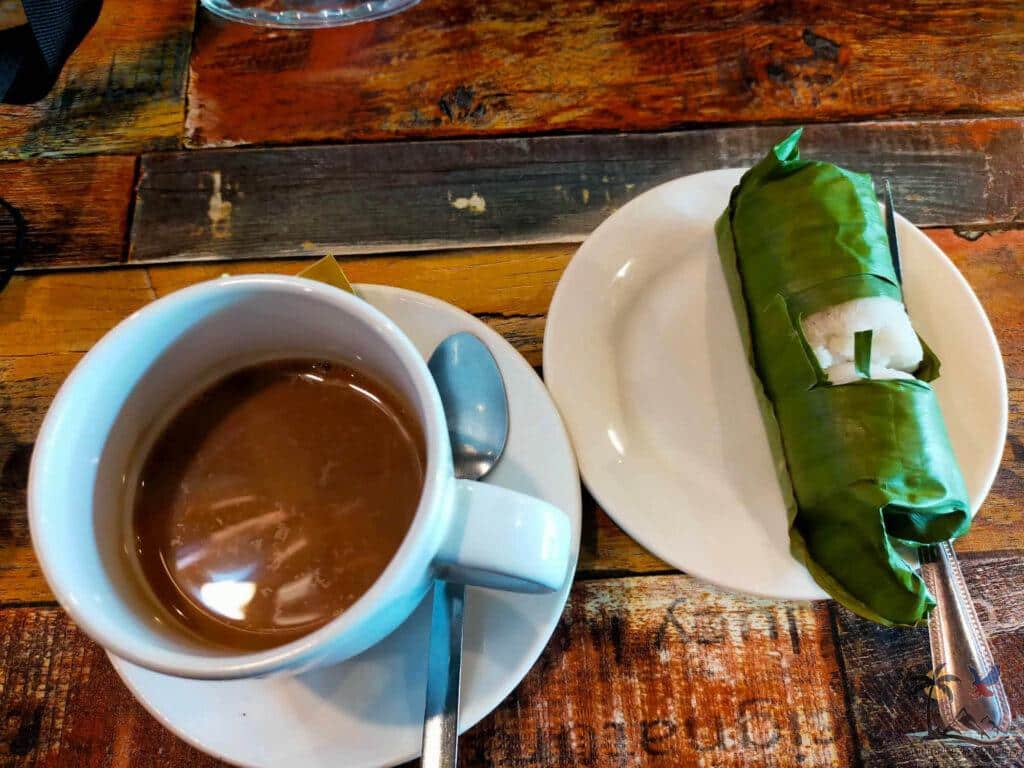
One of my most vivid memories from when I visited in 2018 was drinking the hot chocolate (tsokolate) from Madge Cafe.
4 years later and a new addiction to coffee brought me straight back to their doors, this time to enjoy their amazing native arabica coffee.
Pair your coffee with some puto, and you have a Filipino snack for the ages.
The original branch of Madge Cafe is found in the La Paz market, right next to the famous batchoyans. For convenience and a better ambiance, you can also go to their Atria branch.
- Siopao (Roberto’s)
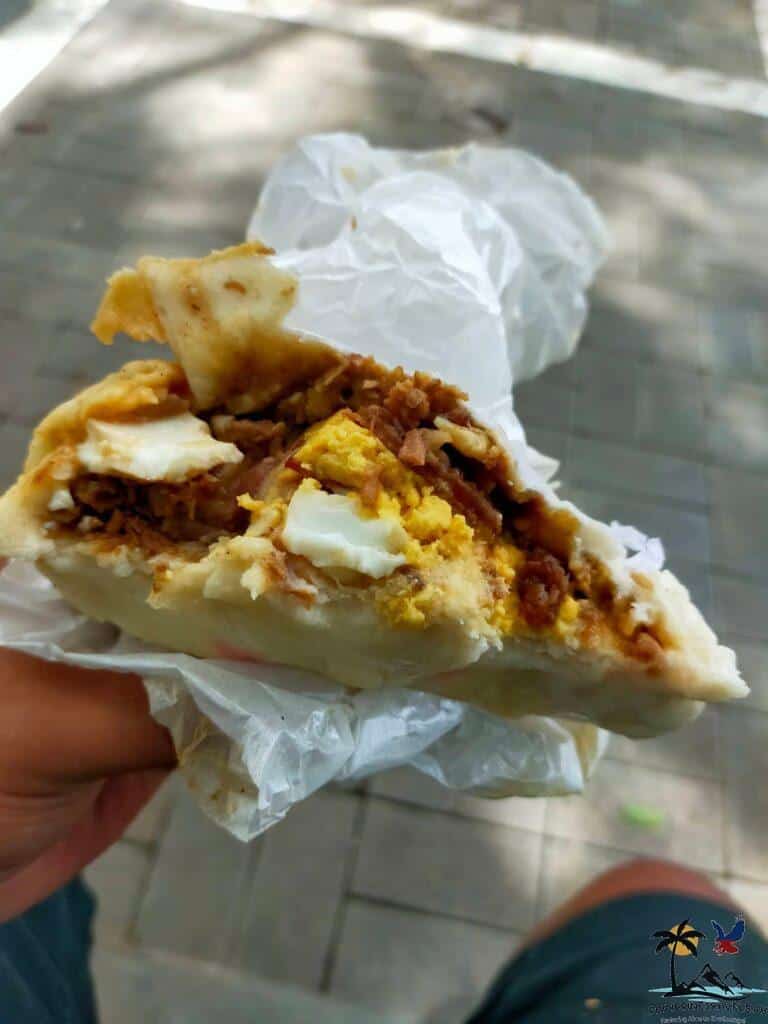
I don’t love downtown areas.
But if it means enjoying an absolute local favorite food (there was a line to get in), then I’m all for it!
Roberto’s Siopao is found in the heart of the city proper, in Calle Real.
No, it’s not wildly different from your everyday 7/11 siopao.
But it’s bigger, tastier, and somehow cheaper. It’s no wonder that the locals LOVE it.
It’s also cool how Roberto’s runs their shop like a burger place. World’s away from just grabbing a siopao from the steamer in 7/11 or Ministop.
- Liempo (Ramboys)
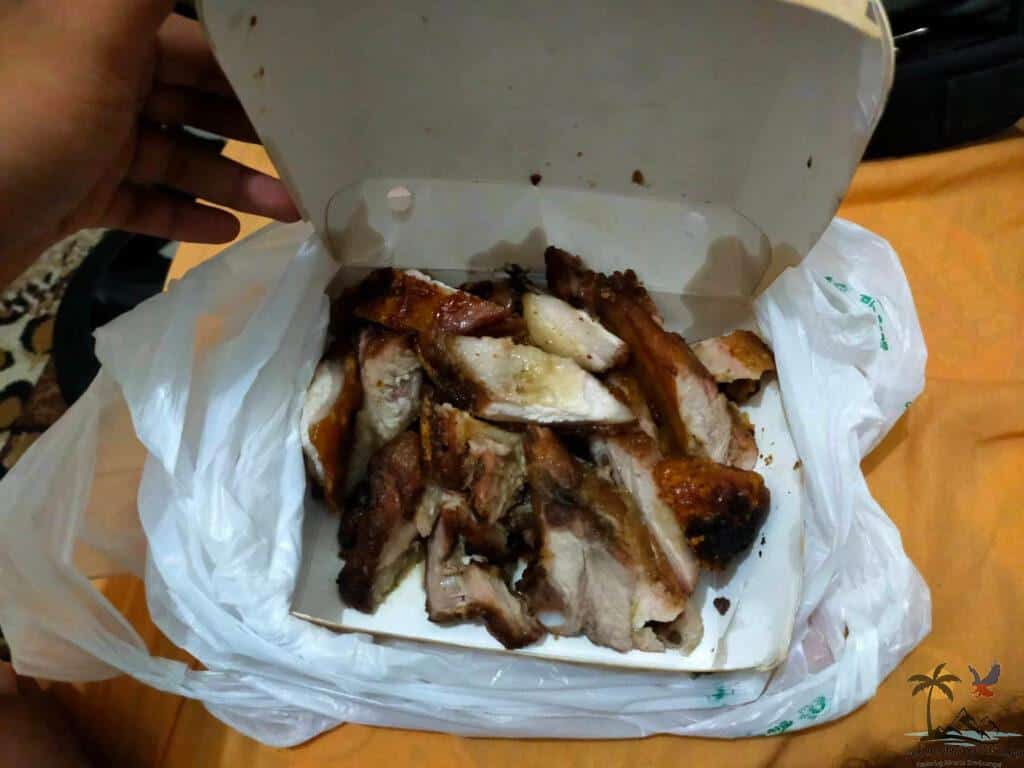
Another dish I tried in 2018 – and HAD to come back for – was Ramboy’s Liempo.
Okay… okay… it’s just liempo, yes.
But it’s one of those things… it’s just better than usual. You have to try it to know what I’m talking about.
Ramboy’s has a restaurant on the Ilo-Ilo Boardwalk.
Additionally, they do have a few stalls dotted around the city where you can grab a take-out liempo.
- Native Chicken (Tatoy’s Manokan)
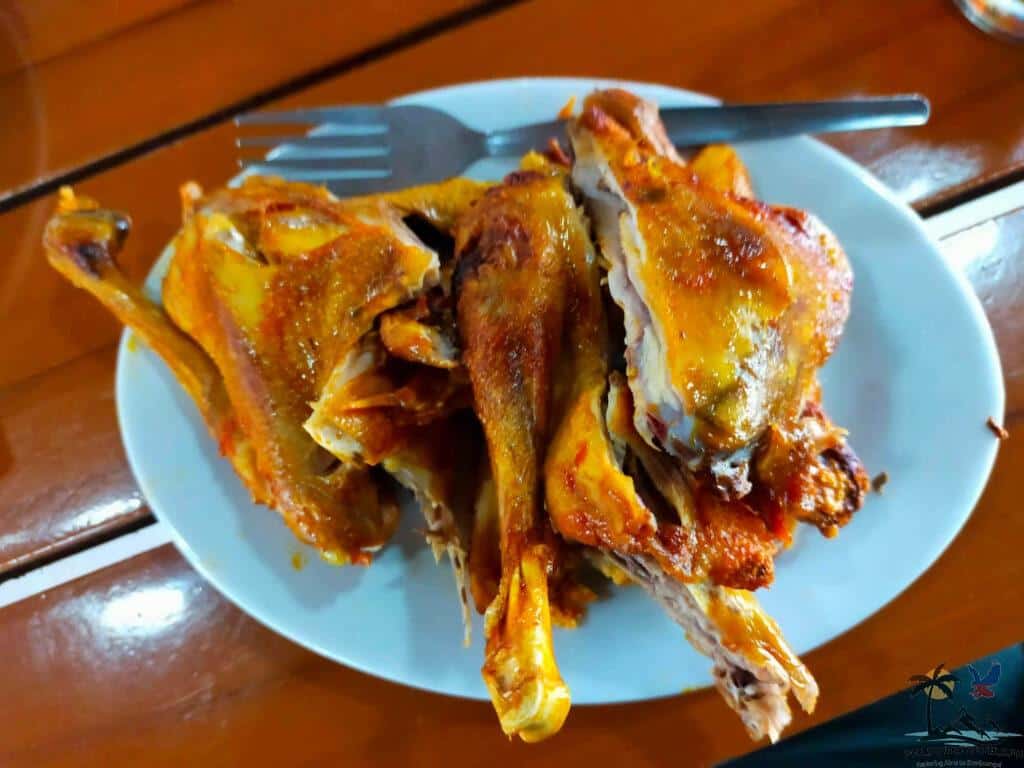
Litson manok (roast chicken) is a dish you’ll find ALL over the country.
But in Tatoy’s, you’ll find that there’s has a little extra zing to it.
One reason is that they use native chickens. These are skinnier and have harder meat and sharper bones than mass-farm chickens, but they’re also a LOT tastier.
Plus, whatever seasonings Tatoy is putting in these chickens is just amazing.
Tatoy’s has two restaurants. One is just a block away from Atria, while the other is along the airport road (you can have lunch or dinner there before your flight like I did!).
Of course, that’s not ALL the food in Ilo-Ilo.
Those are just some of the popular ones!
Things To Do In Ilo-Ilo #3: Visit the Old Churches and Mansions
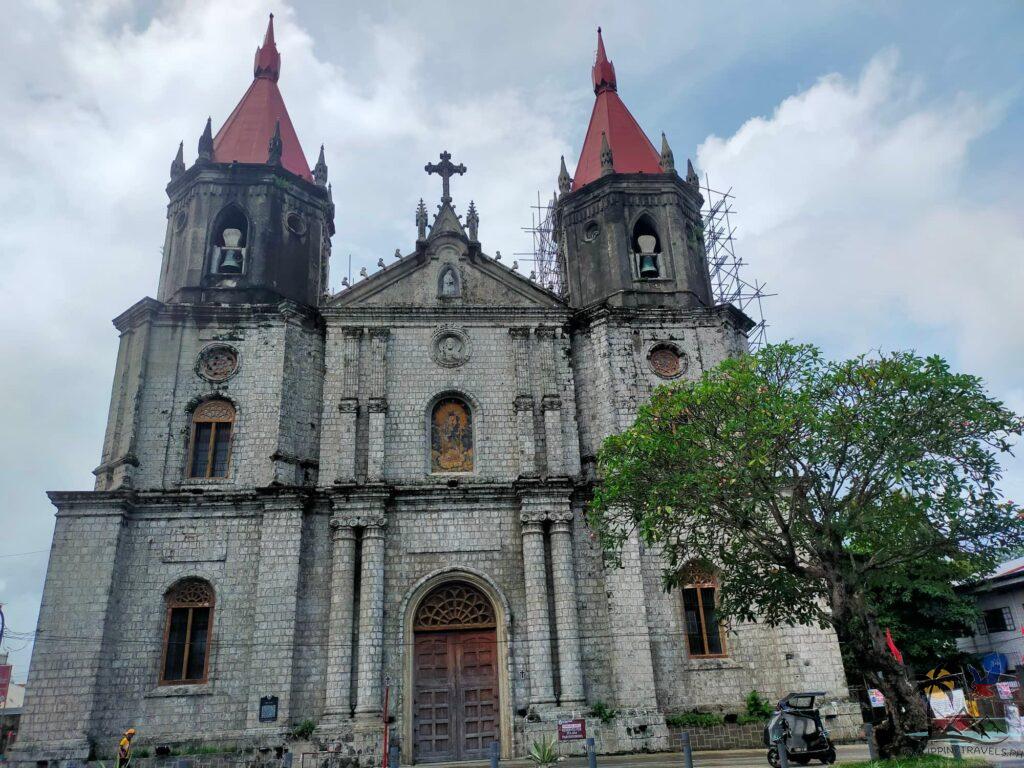
This is one of those things that, if you’ve read some of Ilo-Ilo’s history, you’ll appreciate so much more.
Churches like the Jaro Cathedral and Molo Church are two extremely well-preserved Spanish-era churches. And they’re extremely easy to visit as well.
Speaking of old structures, the mansions!
Ilo-Ilo is full of these beautiful heritage houses thanks to the sugar boom that rocked their economy in the 1900s.
Now before you look up these mansions on Google maps are try to get in, it’s important to know that most of these are private properties.
The easiest ones to visit are Molo Mansion (which now has a souvenir shop inside and a coffee shop outside) and Camina Balay na Bato (which has opening hours and a hot chocolate “tour”).
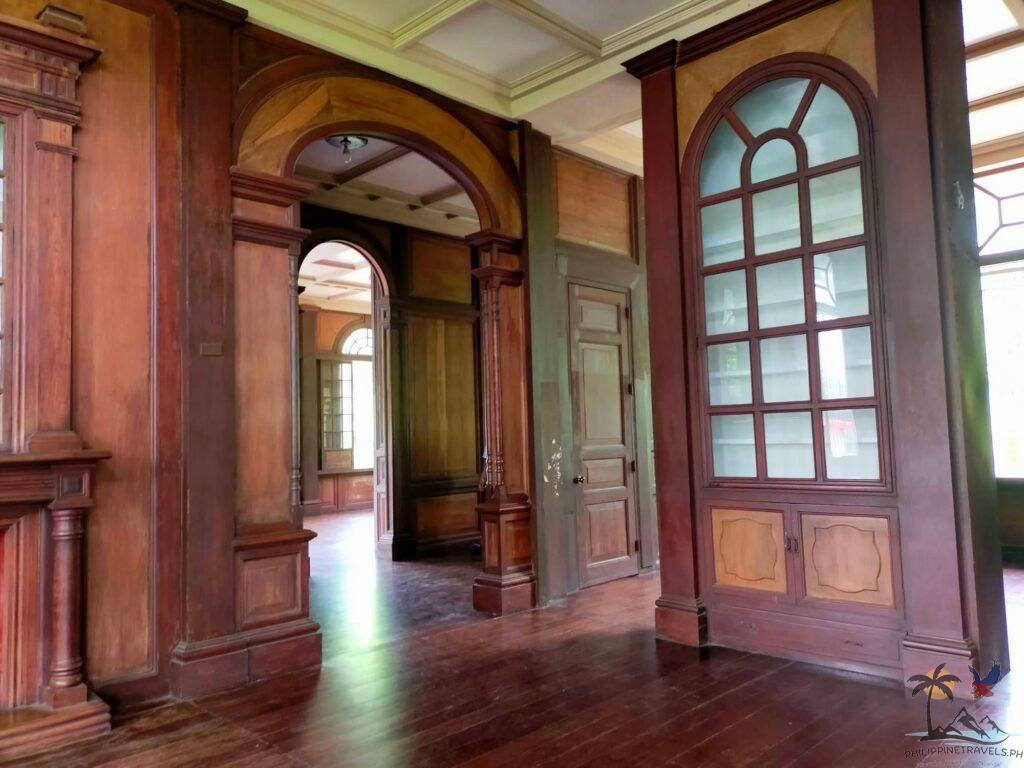
The Lopez Mansion is popular as an events venue. They do have guided tours of the place, but they don’t publicize these too much.
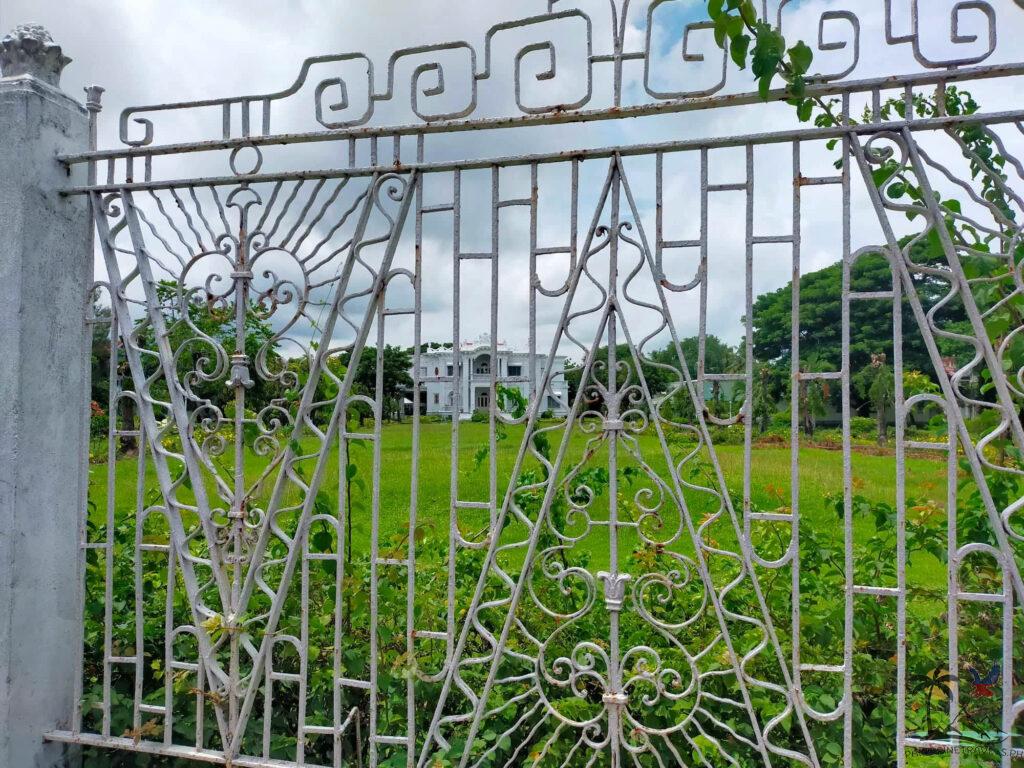
Lizares Mansion in Jaro was turned into a school. It’s super cool to peep in from outside the gate to see the manor inside. You can also ask the guard if you want to go inside to take pictures.
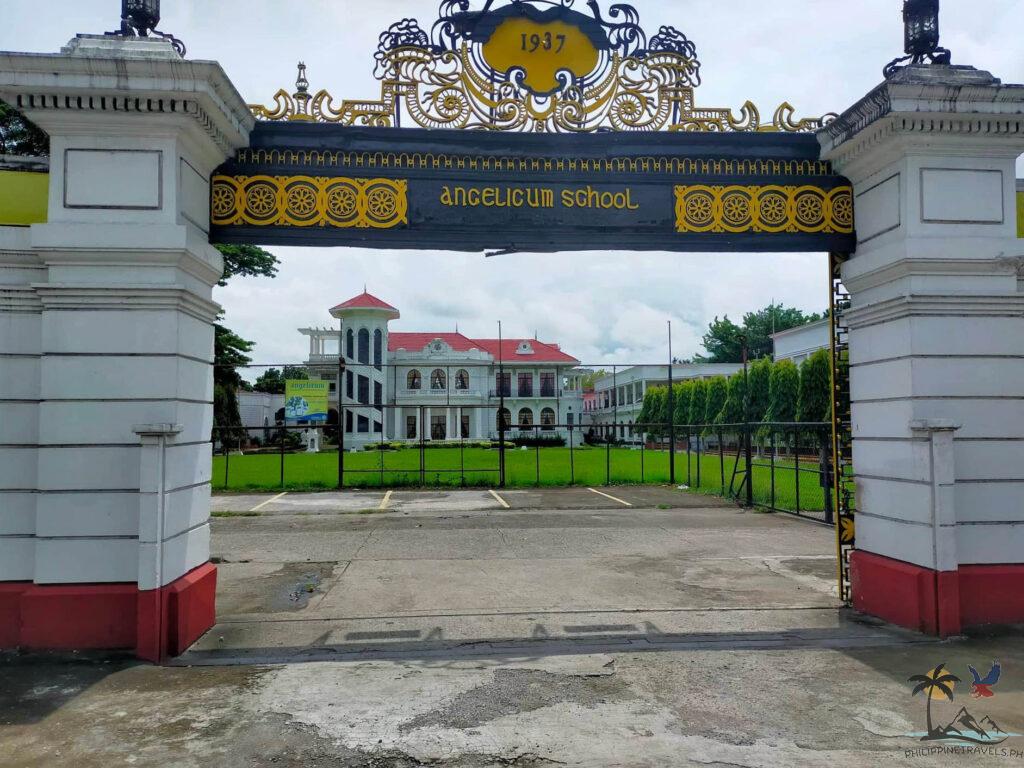
There’s also Casa Mariquit, which is actually older than the sugar boom. I’ve been told if you knock on the door, a caretaker can take you for a DIY-ish guided tour, where you’ll see interesting collectibles from 250 years of Ilo-Ilo’s history.
Then there’s a BUNCH of others. If you drive around Ilo-Ilo, you’ll see so many large mostly-white houses left over from the time when Ilo-Ilo was the Queen City of the South.
Things To Do In Ilo-Ilo #4: Take a Day Trip Outside the City!
I already talked about your options quite a bit in the travel map portion, so let me just summarize them for you!
- Go Island Hopping Up North
Islas de Gigantes is by far the most popular. But if you want a more off-the-beaten-path destination, you can go for Sicogon, Concepion, or Ajuy islands.
For Islas de Gigantes, there are tours every day. And the tour operators can easily provide you with transport from and to Ilo-Ilo city!
- Enjoy Nature in Leon or Igbaras
Leon is home to the Bucari Pine Forest, easily one of the most beautiful places in the whole province.
Once there, don’t miss out on a trek to the Mansiga viewdeck, where you’ll get a breathtaking view of the flat, FLAT Ilo-Ilo below!
Over in Igbaras, you’ll find a LOT of adventure.
The two most popular natural landmarks are Mt. Napulak (which takes around 3-5 hours to hike), and Nadsadjan Falls.
But there are a lot of others as well such as Igcabugao Cave (spelunking), Bato Puti (rock climbing), Mount Opao, Mount Igmatin-dog, Guiritsan Falls, Libog Falls, Lagsakan Falls, and Mount Loboc
- Rent a Motorbike and Explore the Little Towns
I’ve already talked about Guimbal, Miagao, and San Joaquin in the travel map portion. But those aren’t the only little towns in Ilo-Ilo!
I highly recommend renting a motorbike (I got mine from Ilo-Ilo motorcycle tours) and just taking the time to drive around and explore these small, lesser-known towns.
If you’re more of an intrepid traveler, I challenge you to drive to some unknown town, try to find a place to stay there, and really soak in what life there is like.
Things To Do In Ilo-Ilo #5: Visit the Nearby Provinces
Aside from exploring Ilo-Ilo, you can also use the city as a jump-off point to the other provinces in and around Panay.
These include:
Capiz – home of the famous ruins of Alcatraz – an abandoned theme park that gives off a pretty spooky vibe.
Aklan – home of the Kalibo Ati-Atihan festival where people wear colorful and sophisticated masks. Aklan is also the home of Boracay, one of the most popular beach destinations in the country!
Antique – home of some of the most revered hikes in the country! Antique is home to Mt. Madjaas, Mt. Nangtud, and Mt. Baloy-Daku – a trilogy that’s on the bucket list of every Pinoy mountaineer!
Guimaras – Just a short ferry trip away from Ilo-Ilo city is the island province of Guimaras, famous for its Mango festival every May!
Ready to Explore Ilo-Ilo?
Not everyone who comes to Ilo-Ilo comes with the sole purpose of exploring it.
But just because this isn’t a set vacation doesn’t mean you can’t use your free time to go and experience this beautiful province.
With this guide, I hope I’ve helped you understand the place better.
And hopefully helped you plan better?
If you have any questions, comments, or suggestions, leave them down below!
If you want to learn more about the tourist spots of Ilo-Ilo and how to get to them, check out my best 17 Ilo-Ilo tourist spots blog post!
Thanks for reading!
– Manoling

